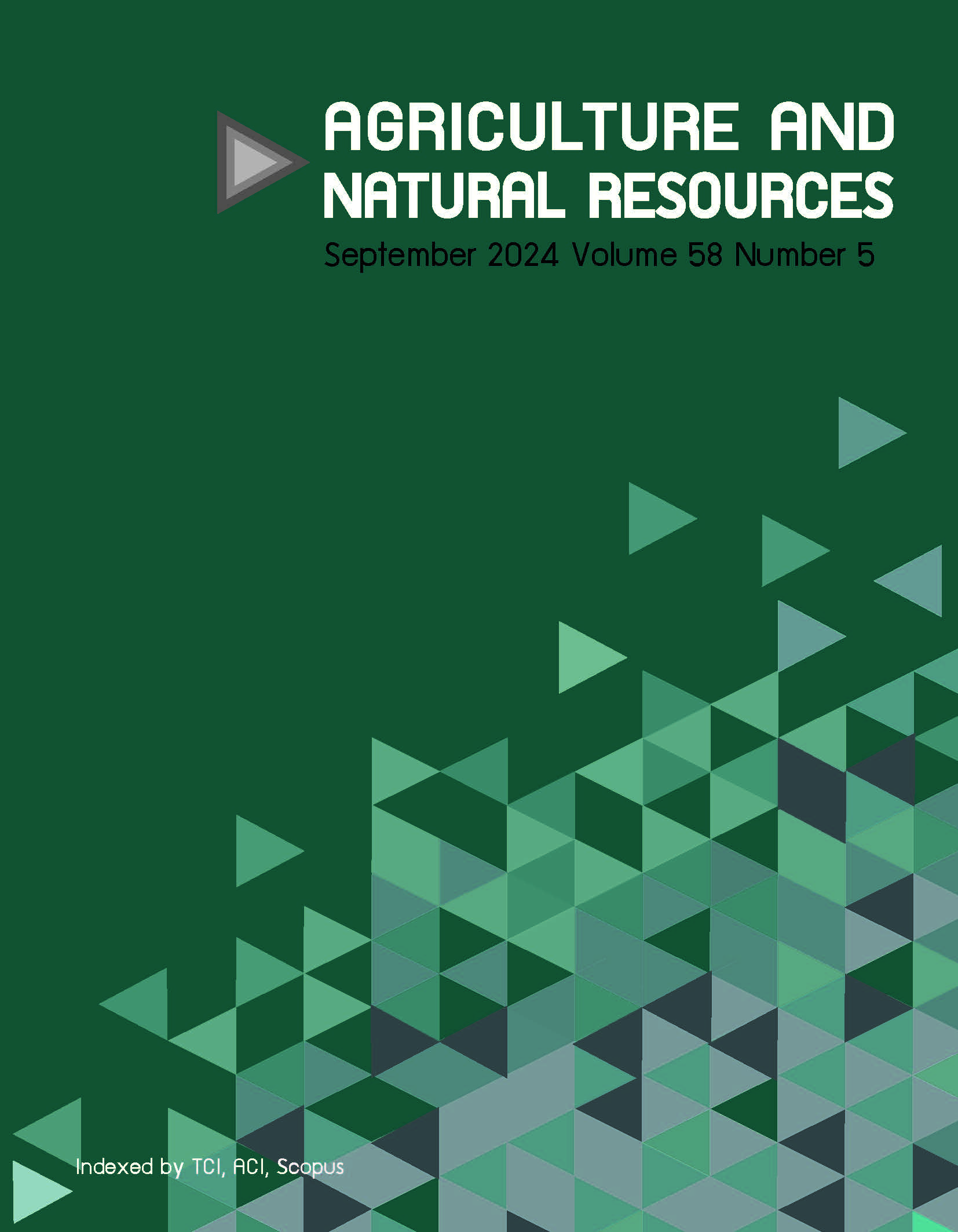Impact of chilling stress on quality and bioactive compounds in young and mature leaves of kratom [Mitragyna speciosa (Korth.) Havil.]
คำสำคัญ:
Antioxidant capacity, Bioactive compounds, Chilling injury, Mitragynine content, Physicochemical qualityบทคัดย่อ
Abstract
Importance of the work: There has been much attention paid to kratom (Mitragyna speciosa
[Korth.] Havil.) since it was declared a legal plant in Thailand. Recently, the demand for fresh
leaves has increased; nevertheless, only a few studies have investigated the postharvest quality
management of the leaves.
Objectives: To examine the impact of chilling stress on the quality and alteration of bioactive
compounds in young and mature leaves of two cultivars of commercial kratom leaves: ‘kan khiao’
and ‘hang kang’.
Materials and Methods: Fresh kratom leaves of both the kan khiao and hang kang types were
sampled from the young and mature leaf stages and stored for 12 d with 85% relative humidity
at: 1) 10°C or 2) at room temperature (RT;30°C) . Every 3 d throughout storage, monitoring
occurred of the fresh weight loss, superficial leaf color, browning score, electrolyte leakage (EL),
malondialdehyde (MDA) content and bioactive compounds (ascorbic acid, antioxidant activity,
total phenolic compounds and mitragynine contents).
Results: Chilling injury (CI; based on brown stain on the leaf) was discovered in both types of
kratom leaves refrigerated at 10°C. In both types, RT storage resulted in less weight loss and
browning. Yong leaves lost less weight loss and CI than mature leaves. CI was positively associated
with increased EL and MDA levels in leaves kept at 10°C. In both types, the mitragynine content in
the mature leaves was higher than in the young leaves. Both types lost mitragynine, ascorbic acid,
antioxidant activity and phenolic compounds due to the cold storage condition.
Main finding: Cold storage induced chilling stress that resulted in leaf browning due to membrane
dysfunction, as well as the loss of bioactive compounds and medicinal components, including
mitragynine.
ดาวน์โหลด
เผยแพร่แล้ว
รูปแบบการอ้างอิง
ฉบับ
ประเภทบทความ
สัญญาอนุญาต
ลิขสิทธิ์ (c) 2024 This is an open access article under the CC BY-NC-ND license (http://creativecommons.org/licenses/by-nc-nd/4.0/), production and hosting by Kasetsart University Research and Development Institute on behalf of Kasetsart University.online 2452-316X print 2468-1458/Copyright © 2022. This is an open access article under the CC BY-NC-ND license (http://creativecommons.org/licenses/by-nc-nd/4.0/),
production and hosting by Kasetsart University of Research and Development Institute on behalf of Kasetsart University.







